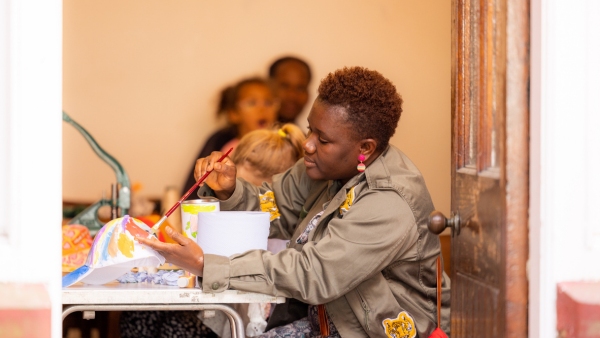Undeterred by the gradual drying up of comments, this is – for the time being – the penultimate of a series of posts on ‘the paradox of entitlement’. The most recent have explored two ways of reinforcing the reciprocal dimension of welfare and public service entitlements: conditionality and the contributory principle. Today I return to one of my recurrent themes over the years; how can public services be reimagined and redesigned to accentuate their reciprocal and relational core?
This is hardly novel and should be an easy argument to make. We know parental engagement is vital to the success of pupils and schools; lifestyles, attitudes and observance of treatment regimes are crucial to the prognosis of NHS patients, and the police find their job almost impossible if communities don’t exercise at least some level of responsibility and self- policing.
Public service outcomes are demonstrably the result of the collective efforts of service providers, service users and the wider community. Whether a basic public service entitlement turns into a life enhancing experience depends to a large degree on us and the ways we relate to those services. Yet still this truism remains marginal to the narrative, culture and day to day practice of public service management. So rather than making the case for relational public services again, I want to explore through concrete examples some reasons why the insight seems so hard to act upon.
The first is simply that change takes time and effort and can go wrong. The RSA itself offers an illustration. Following strategic guidance from Trustees, the RSA has over the last four years made a concerted effort to engage its Fellows more fully as partners in the delivery of the Society’s charitable mission. This has involved many changes including; the replacement of the former appointed, consultative Council with a new representative and more hands-on Fellowship Council; the creation of a team of dedicated network facilitators developing and supporting Fellows’ activities; encouraging Fellows to form networks at whatever geographical level and around whatever shared interest works best for them; supporting a wide variety of ways for Fellows to engage with each other on-line; the creation of the Catalyst Fund which regularly gives small grants to back Fellow’s initiatives; and a much greater emphasis on engaging Fellows in the Society’s research and development projects.
It is clear now that the faith of Trustees and the hard work of RSA staff is paying off: There are four or five times as many active Fellows’ groups as a few years ago (and that’s just the ones we know about), we have a good flow of bids to the Catalyst Fund and the quality of those bids continues to improve, RSA Fellows are playing a prominent part in key research projects (and this is being increasingly seen by our partners as part of the attraction of working with the Society), and the current Fellowship survey is showing both high levels of satisfaction and a growing enthusiasm for engagement.
Quite apart from all the good things generated by this engagement (many of which I have highlighted in blog posts), it has provided authenticity and distinctiveness to the Society’s mission; in arguing that the 21st century need a new more ambitious model of citizenship we are increasingly able to show how the Society’s Fellows are exemplifying that ideal.
Our pride at what has been achieved is exceeded only by our ambition for what could lie ahead. But, and here’s the rub, at times the process of engagement has been exhausting, dispiriting and even sometimes felt like it might all be a massive error. Among the mistakes we have made have been a lack of realism about how quickly culture can change, raising expectations without having the infrastructure to meet them and under-estimating the fierce resistance to change among those in the Fellowship who prefer a more traditional, hierarchical, model of engagement. Most of all, the process of working out how best – with limited resources - to support a group of busy volunteers to develop good ideas and act on them involves continuous trial and error, learning and self-criticism. If the Trustees and Executive had not seen Fellowship engagement as an essential part of the RSA strategy we may well have lost heart and momentum.
So it is with the welfaer state. Indeed with growing needs, shrinking resources and the requirement of public accountability, the challenges are much greater. In attempts at the engagement of service users and citizens by public service managers and professionals there are invariably times when the whole process feels like more trouble than it’s worth. That’s when engagement is abandoned or more often scaled down to something less ambitious and more manageable. But it is almost better not to try than to enter into a process with a lack of conviction or realism.
Because engagement can be so difficult the public sector is prone to a self-fulfilling prophesy: a half-hearted commitment leads to a failed process which confirms the initial scepticism.
An important reason for that scepticism lies in the bureaucratic/professional culture of public services. To make this point simply (this post is already too long) I go back to an example I gave a few weeks ago: research by Anne Hook and Bernice Andrews found that a significant variable in the effectiveness of psychiatric treatment for depression was whether patients disclosed their true feelings to therapists. Those who hid their feelings – generally because of shame – were much less likely to get a good outcome.
The first lesson is that patients have to use the service responsibly (respecting the therapist’s need for openness) for it to succeed. But – and this is crucial – this lesson can only be learned alongside a second. Over to Dryden Badenoch, who wrote the blog post in which I read of the research:
By illustrating the effect of individual client decisions on therapeutic outcome, Hook and Andrews have furthered the argument for routinely considering the client’s contribution to the effectiveness of psychological therapies, rather than treating the client as a passive recipient of the ‘miracle therapy’ or the attentions of the ‘super-shrink’.
It is not easy for professionals and managers to accept that their success depends not just on their own methods and skills but on the engagement of services users and citizens, and also to accept that this engagement is only likely to work if they give up some of their own authority and power. The combination of professional resistance and the sheer difficulty and effort involved provides a high barrier to reconceiving public services as reciprocal and collaborative. Which is why people like me have been banging on about this for so long but making so little progress.
It is my great privilege and good fortune to have been able to test the theory out on the RSA and to see our amazing Fellows generating such exciting results. What organisations do is a more powerful influence than what they say. Hopefully, by sticking the course and showing how genuine engagement pays off, we can inspire others in the third and public sector to follow our lead.
Related articles
-
Open RSA knowledge standards
Alessandra Tombazzi Tom Kenyon
After investigating ‘knowledge commons’, we're introducing our open RSA standards and what they mean for our practice, products and processes.
-
RSA Catalyst Awards 2023: winners announced
Alexandra Brown
Learn about the 11 exciting innovation projects receiving RSA Catalyst funding in our 2023 awards.
-
Investment for inclusive and sustainable growth in cities
Anna Valero
Anna Valero highlights a decisive decade for addressing the UK’s longstanding productivity problems, large and persistent inequalities across and within regions, and delivering on net zero commitments.




Be the first to write a comment
Comments
Please login to post a comment or reply
Don't have an account? Click here to register.